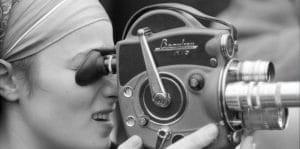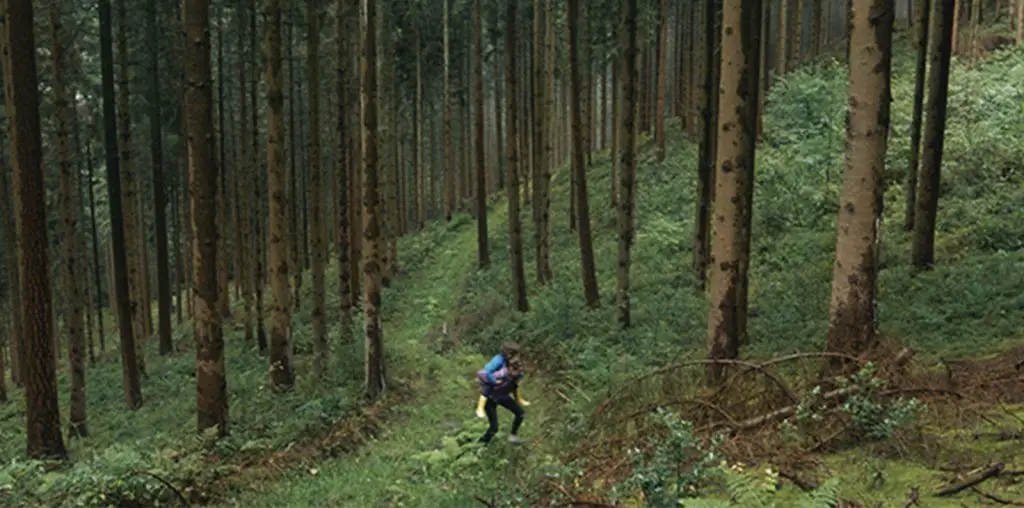
When I was growing up around Boston in the 1960s, I remember seeing newspaper ads for screenings of “underground films.” That’s as close as I came to seeing any of them. This was during a brief moment when these controversial products of the big, bad city appeared in my backwaters community. New York was, of course, the epicenter of the exotic, strange and profane, which only added to the films’ mystique. Also fascinating but off limits to me were the Velvet Underground’s club dates — they played at the Boston Tea Party, a music spot on Berkeley St. in the South End that also housed the Boston Filmmakers’ Cinematheque, where underground films were screened. I was too young to experience any of this first hand but was well aware that anything labelled “underground,” deservedly or erroneously, was anointed with the hippest counter-culture designation of the moment.
When it came to underground films, a certain portion of the public took interest for the same reason that they found some European films appealing — they were about sex and featured nudity, which was off-limits in American films made back then. If I remember correctly, underground film screenings at the Cinematheque were near the bad side of town, known as the Combat Zone. It’s possible to imagine that there was some audience spillover that brought in some of the heavy breathers in trench coats along with students and filmmakers.

“ … Rubin’s films were part of the program when art films co-mingled with porno movies in…strip clubs and dirty book stores.”
As I watched Barbara Rubin and The Exploding New York Underground, I wondered whether any of Rubin’s films had co-mingled with porno movies in some sweaty Boston auditorium, chock-a-block with strip clubs and dirty book stores. If so, would the irony of it have appealed to her? Probably not. Her films featured the requisite nudity and sex that branded them outlaw movies but were made by an 18-year-old wunderkind who aimed to express ideas about the universe, human relationships as well as love and sex. That may sound like the sort of nonsense pornographers once professed when they wanted to keep their Mafia-funded skin flicks up on the screen, justifying them on the grounds of artistic merits. But Rubin was, no doubt, sincere if not overly optimistic in her belief that film could help change the world for the better.
Director Chuck Smith’s portrait of Rubin, an eccentric beauty who was gifted beyond her years, is intoxicating in the way it glamorizes the period. As one who missed out on the earlier part of the ’60s, it was a treat to be immersed in the cultural world of lower Manhattan in those times. But in hindsight, Smith’s take on the era, as attractive as it may seem, is steeped in nostalgia and has a tendency to gloss over some rough patches.
Apart from being a talented filmmaker, whose Christmas on Earth rocked the burgeoning New York independent film world as well as middle-class mores, Rubin was a catalyst who seemed to know the important artists of the day and managed to bring them together. It was she who brought Bob Dylan to Andy Warhol’s factory. Warhol, floored by the visiting pop star, went right to work shooting one of his screen tests of Dylan as he did for many Factory denizens — the subject sat in a chair, looked directly into the camera for several minutes and did nothing else. Dylan, unable to stay still, puffs on a cigarette and chuckles at one point. Other historic introductions she engineered included a meetup between Warhol and the Velvet Underground. Rubin was a longtime friend of independent filmmaker Jonas Mekas — she met him through family connections. But she was probably closest with Allen Ginsberg, who at the time was one of the country’s foremost poets.

“…Smith’s take on the era, as attractive as it may seem, is steeped in nostalgia and has a tendency to gloss over some rough patches.”
The constantly brewing artistic storm around her resulted in some of the decade’s most enduring art and pop music, but left as an open question is Rubin’s involvement with drugs. As a chubby teen, doctors prescribed amphetamines to help her strip off pounds, as was the accepted practice of the time. The film alludes to her drug use — later on, drugs made her hair fall out — but doesn’t explain how that may have played into her artistic endeavors. It’s not hard to imagine that her work was created in amphetamine-fueled bursts of creative energy, but that avenue is never explored. Also, sketchy is her institutionalization as a young teen. Those factors played a significant role later in her life, but the thread is never thoroughly examined.
Her later years were marked by an abrupt change in lifestyle. After a falling out with the Warhol crowd and with Ginsberg, she dropped all vestiges of her artistic past and pursued a path of Orthodox Judaism. Her friends were stunned by the impulsive move.
Some call her an angel and the Joan of Arc of the independent film world. Although there’s little doubt she made her mark as a filmmaker, apparently few of her films still exist. She developed a grandiose and strange plan for a follow up to Christmas on Earth, based on Snow White that was to include a cast of major stars, musicians and luminaries — Marlon Brando, Herman’s Hermits, and Federico Fellini and other A-listers. Understandably, it never happened.
Perhaps better remembered as a catalyst who brought together pop culture icons of her time, Rubin also championed controversial films made by her peers and stood ardently against censorship. In short, she remained arm in arm with some of those who helped make the ’60s the ’60s.
Perhaps one day film will indeed change the world for the better, but for now, all we can do is watch and experience what’s left of the experimental media of that time and wistfully remind ourselves of what we missed.

Barbara Rubin and The Exploding New York Underground (2019) Directed by Chuck Smith. Starring Richard Foreman, Jonas Mekas, Amy Taubin.
7 out of 10 Bolex Cameras

